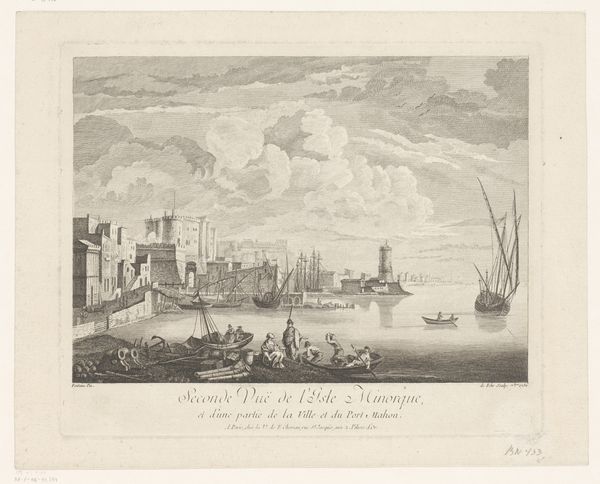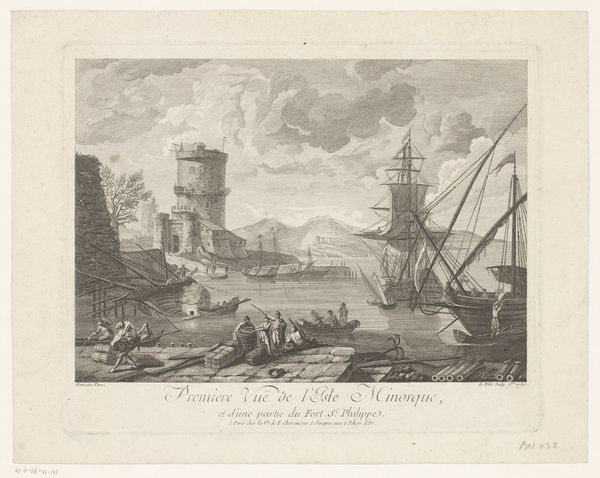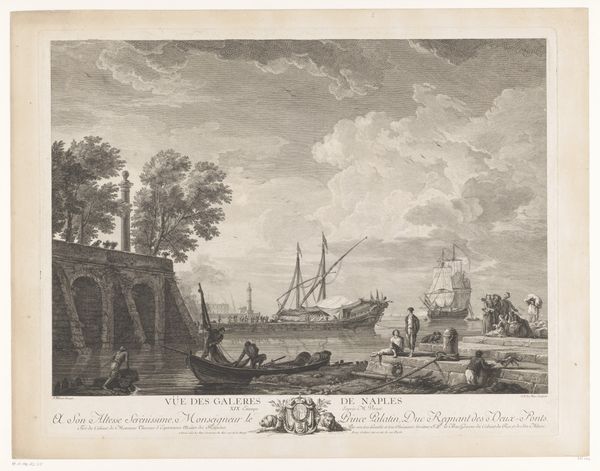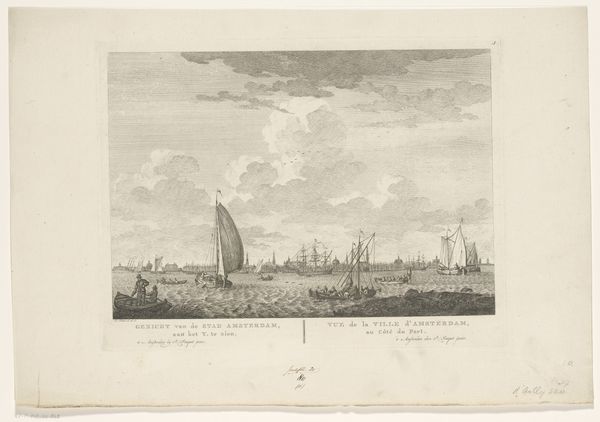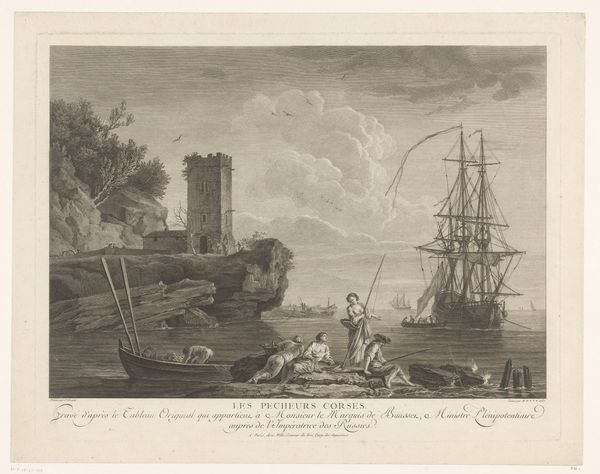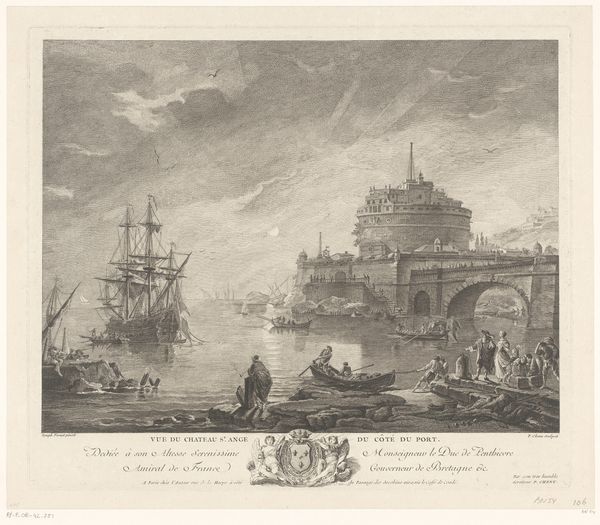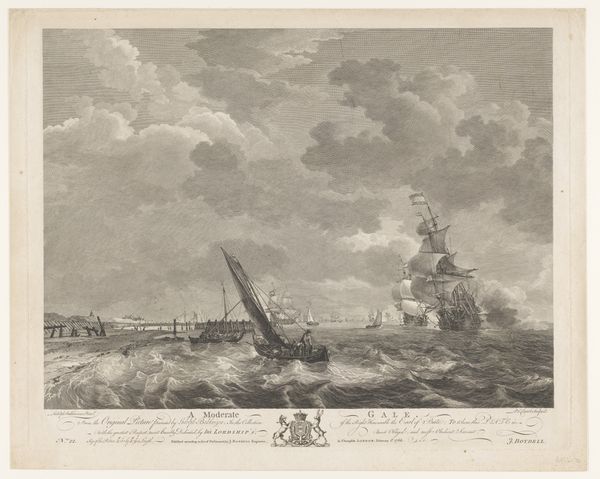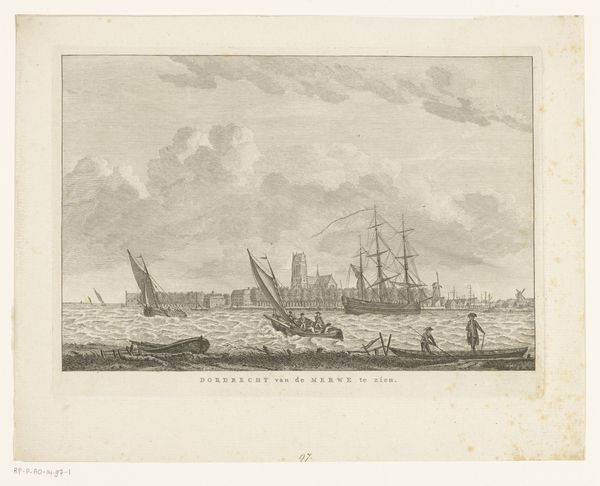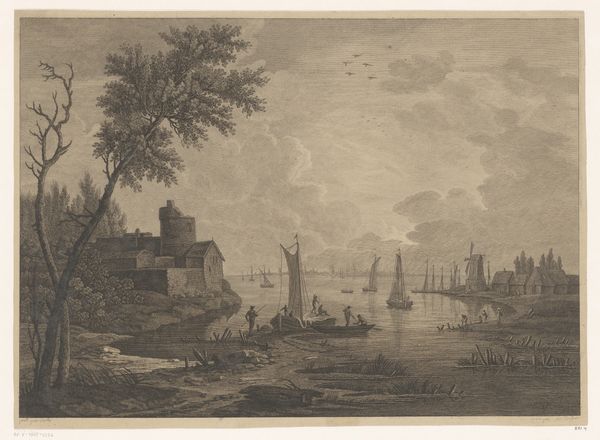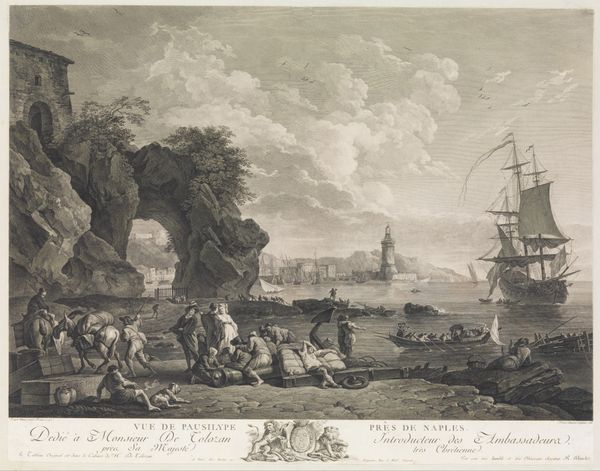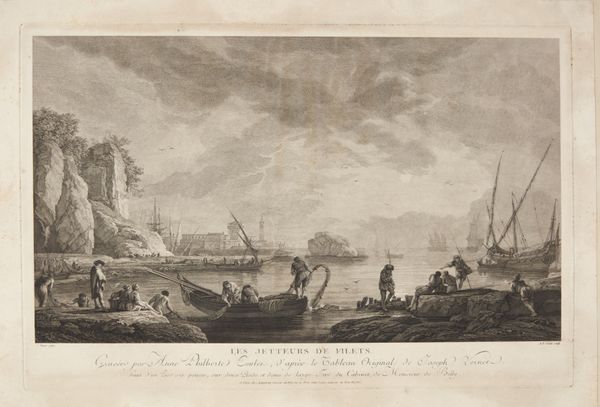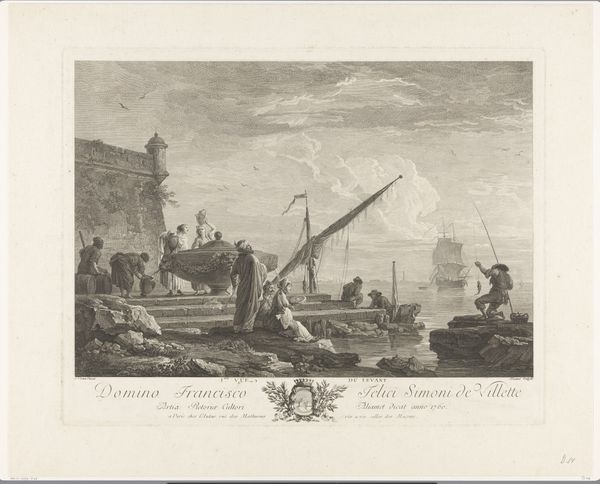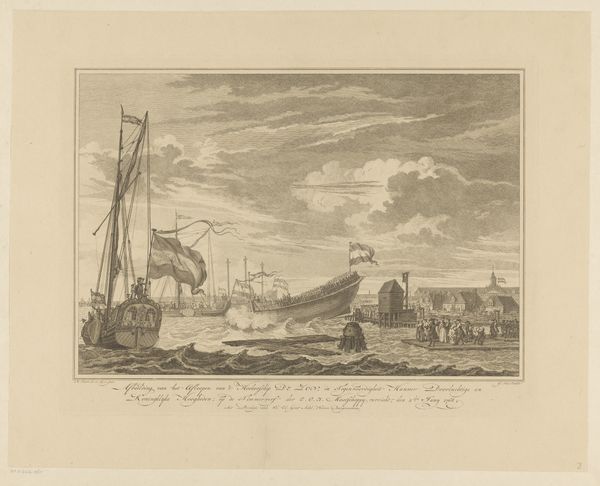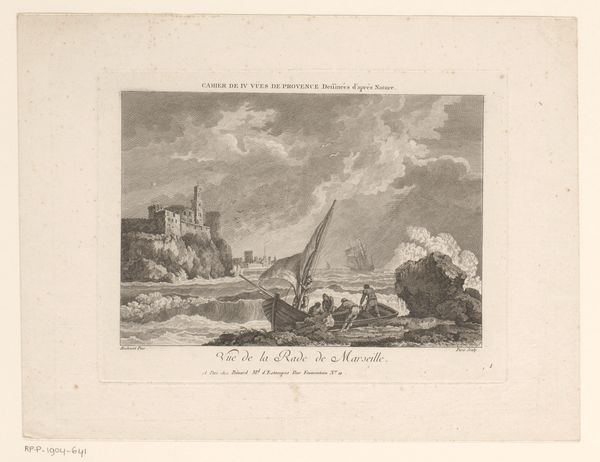
Dimensions: height 484 mm, width 642 mm
Copyright: Rijks Museum: Open Domain
Curator: Here we have "Havengezicht met figuren bij een fontein," or "Harbor view with figures by a fountain." This print, made with etching and engraving, comes to us from the hand of Jacques Philippe Le Bas between 1750 and 1783. What's your first impression? Editor: There's a distinct air of leisure here, isn't there? A feeling of serene public space, maybe even commerce meets pleasure, under a vast and expressive sky. I’m drawn to the way the people are depicted. Curator: Well, thinking about it historically, harbor scenes were often commissioned. They are not mere representations of place but can highlight naval power and mercantile activity. Editor: Right, I see that, but considering it through a modern lens, those people are not mere background. Who has access to this space? What are the gender dynamics? Is there any element of colonialism that informs this imagery? Curator: Indeed. Etchings and engravings, particularly at this scale, made images like this relatively accessible. Circulating them allowed for the propagation of certain values, views of empire and the social order. Editor: Exactly. The figures near the fountain are primarily engaged in what appears to be casual conversation, whereas the labor seems confined elsewhere. Whose work sustains this leisurely scene? And whose stories are left untold? Curator: What I appreciate here, speaking purely technically, is the intricacy that Le Bas achieves. Look at the detailed rigging of the ship or the way the light is rendered on the water – it almost anticipates Impressionism. Editor: It's lovely, truly, but I can’t help but feel that such beauty can often serve to mask inequity or injustice. Who are we choosing to portray, and how does that choice shape our historical narrative? Curator: I think that’s a very pertinent observation to carry forward as we view other works. Art, whether painting, sculpture, or print, it’s never truly neutral, is it? Editor: Never. Examining who holds the brush or the printing press, and why, offers a rich understanding of the culture and power structures of the era. It is key.
Comments
No comments
Be the first to comment and join the conversation on the ultimate creative platform.
